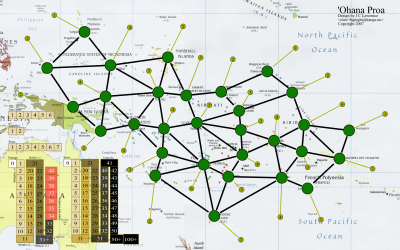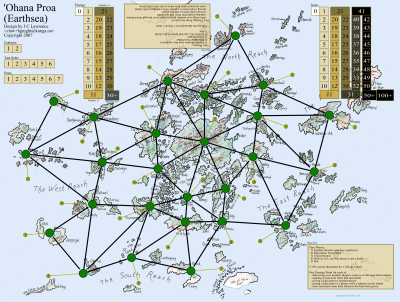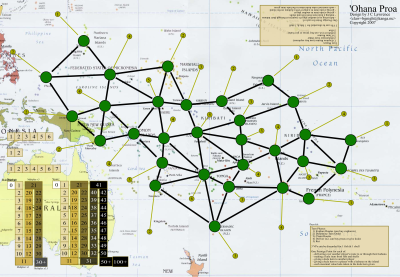Another set of playtests on the Polynesia map went extremely well.
Despite my efforts the game persists in trying to last about 3 hours with all new players. 2.5 hours is definitely in reach for an all-new player group, but it is a fight.
The only aspect that I’m still fiddling with is the Kahuna. I’ve been convinced for a while that they are not strictly necessary to the game, but I like them and so left them in, seeing them as a possible expansion mechanism. I’ve played and without them. One of today’s games however revealed their downside with efficiency-minded players: They’re resource production magnifiers and when they’re used efficiently resource production rates get very high (I was producing almost 30 fish plus more than a dozen shell every turn) and the lower value kula tokens are thus simply not as interesting. That’s a problem. Fortunately the obvious resolution is simple:
1) Remove kahuna from the base rules and make them an optional advanced game
2) Rescale the prestige multipliers to every 15 rather than every 10 when using kahuna
or:
2) Increase the kula token costs to 5/11/7
That’s simple enough (I’ll probably drop the second rule change for the third after I work over the spreadsheet some more). Everything else is working well. Hopefully we’ll get in another game on Monday and again on Tuesday if Corrupt Benifecence doesn’t distract with its own playtesting.
Recent playtests have also started to clearly reveal that the game really has three phases. It always did, but it took a bit before I noticed it so clearly:
1) The first portion of the game is dominated by infrastructure building and is very zero sum competitive.
2) The mid and most of the late game is dominated by sustaining the income rates required for ideal gift-giving (kula).
3) The end-game, which is relatively short, is mostly defined by limiting and constraining the delivery opportunities of key players through route claiming and which specific markets are available for delivery when.
The only other change I’m looking to make is:
- 3 prestige may be discard to allow both deliveries in a turn to use one more proa than the player has
Not a biggie but it makes prestige even more fungible. It is a small change that, again, should occur in less than half of games, but it will make for more interesting end games.
I should remember to get pictures of the game in play posted…



